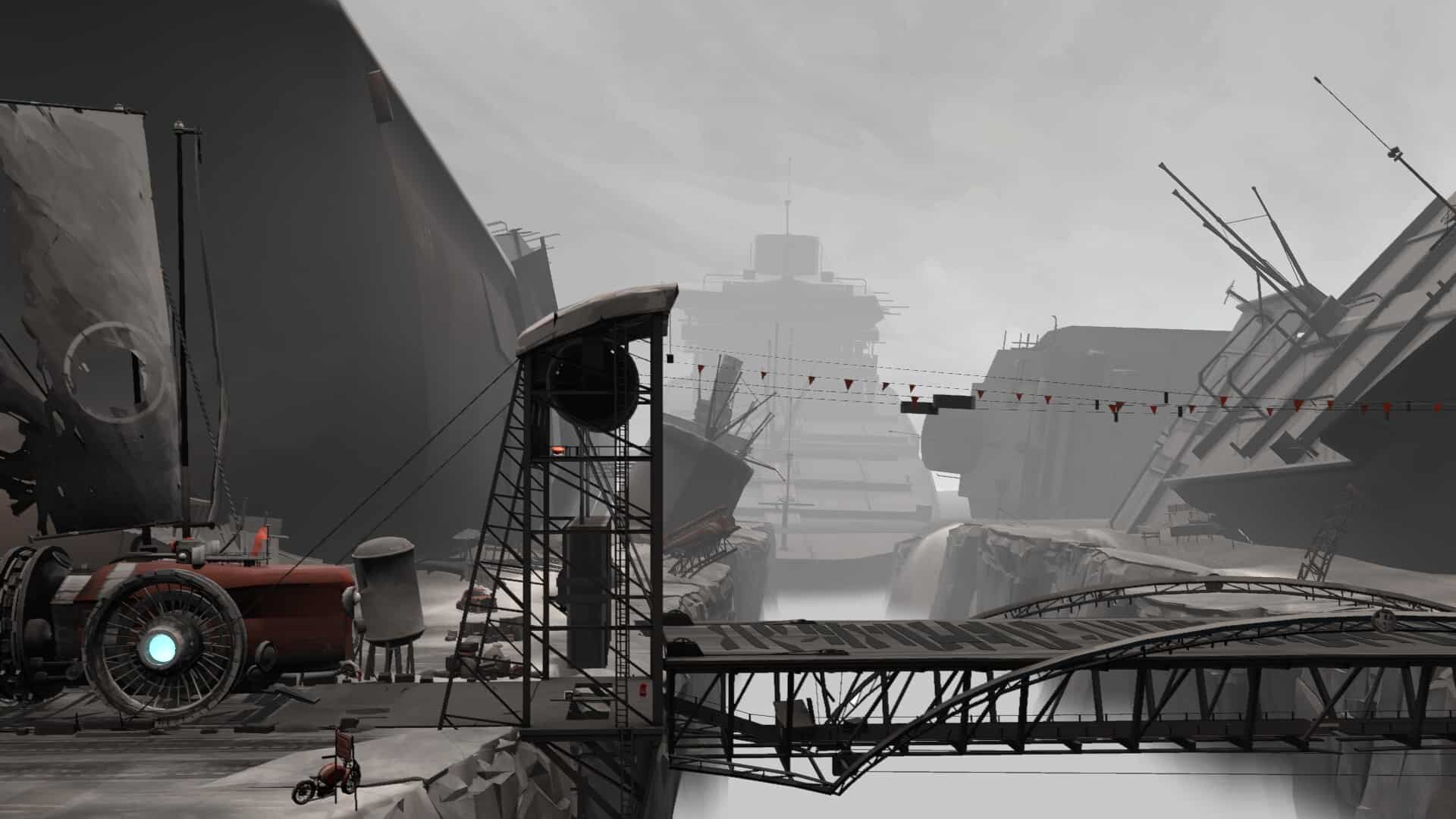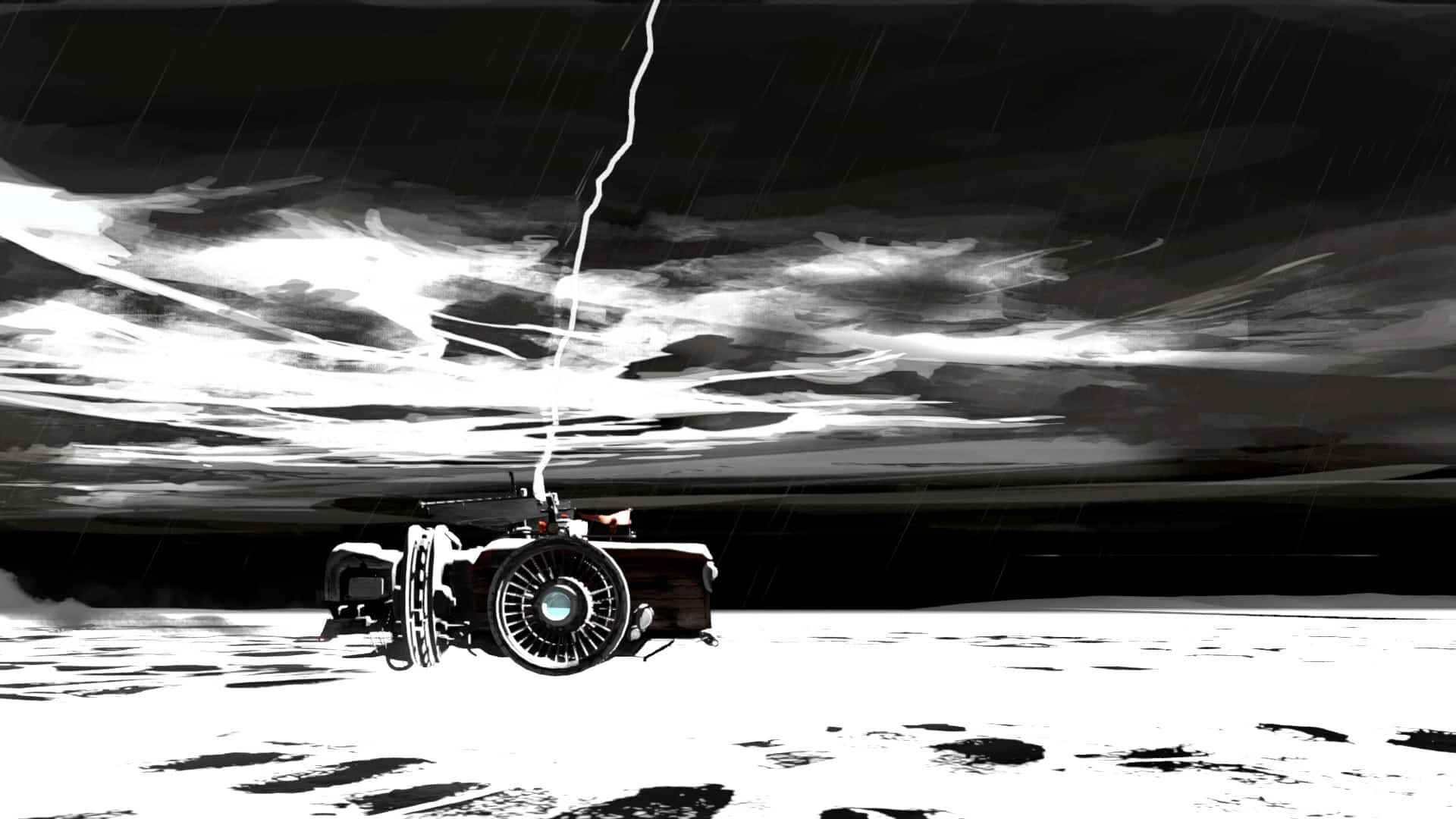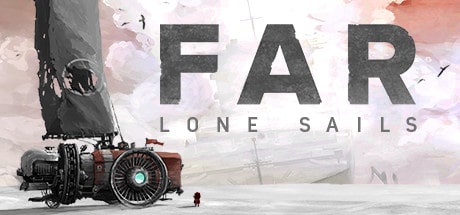FAR: Lone Sails by Okomotive
As I hit my mid 30s, I realize the importance of slowing down to keep myself in the moment, that the future is illusory and the past just jumbled, biased memories. I breathe, and I am aware that the present tense is all that I have, that the journey alone truly is the purpose, that the dot-to-dot sequencing of the moments – and, most importantly, how I am within them – is the entire meaning of life. If you can grasp even a little of this thinking, then FAR: Lone Sails is a game for you.
There is no health bar, no survival mechanics, and death is – almost – impossible. No upgrades, no discernible story, no dialogue, no enemies or monsters populate this fresh 2D post-apocalyptic iteration from Okomotive, an upstart company based in Switzerland.

It’s the Journey, not the Destination
FAR: Lone Sails, their excellent debut, is a game where the only real objective is forward motion. In that sense it works as a superior metaphor for the very mysterious fundamentals of who we are, what makes us tick and why the adventure resonated so grandly with me. The meaty joy of FAR is in simply moving from left to right with no known destination or exact purpose but, when in full-flight, the feeling of satisfaction that such a simple act brings is really something special.
I began the game with my little red character (Lone) who looks not dissimilar to the character from Journey, a solo mute who wears a kind of body-scarf, mounting what is essentially a knocked-together – but wonderfully designed – over-sized, steam-driven train engine (Howl’s Moving Castle crossed my mind a few times).
With no tutorial, the game is simple to fathom as you go, discovering what each button does on the machine. It is what I call an “Act 2” game: I don’t know how I got here, and by the end of my three-hour adventure, there are still many unanswered questions. Let me say that despite this I found the finish very satisfying and even moving. The machine had become my friend.
I Often Dream of Trains
When I pushed in the large red ignition and the machine set off with satisfying gear shunks and hefty gadunks, I soon saw how the engine system worked. And it is all very simple. As I traversed the landscape (more on that to come), I quickly realized that certain items along the ground needed to be gathered to act as energy for my hulking contraption.
So I stopped my vehicle, jumped out, gathered the items, brought them aboard, placed them on to the little elevator at the back, hit a button and saw the material instantly fill my fuel gauge. As I built up a head of steam, chugging along, the steam build-up would reach an apex, and if I hit another button at the optimal time, it would receive a speed injection which caused it to spurt steam from its top like a whale’s blowhole.
I always found this little boost generated a glorious feeling of power, success and progress. There is also a set of large sails attached to your roof which allows you to utilize wind power, but they only work – naturally enough – if the wind is blowing in a favorable direction and are a hindrance if – naturally enough – the wind is howling in your face.

Rhythm and Flow
And truthfully, for the most part, that is basically how the core gameplay works (though there are other little additions later on that I won’t go into other than to say that the gadgets are fun and add layers). Pick that thing up, put it there, hit that switch; running and jumping around to maintain combustion, rolling nonstop.
This was a hugely gratifying rhythm when I really got it right. And when I was achieving it, rollicking through the countryside at full pelt as the sun rose in the background, with the music perfectly pitched to mirror the beauty and sense of freedom that I felt, FAR made me smile, so very content in those moments.
Comparable games in tone would maybe be something like Journey, as it creates a sense of wonder with its ambiguous world, though FAR conveys storytelling in the hints and detail of the awesome landscapes and areas that block your way and require negotiation. And for that reason, the regular environmental puzzles, as well as the need to manage your machine’s internal issues, FAR is also a much more interactive experience. None of the puzzles are especially difficult, but most do require some thought, and it was always exciting to get my colossus back on the road to see what interesting ideas lay up ahead. (There are a few, no spoilers.)

Enigmatic Environments
The weather is at times very much the enemy, causing damage to your transport that requires fixing, and the atmosphere of this world generally strikes a great balance between natural earth (mountains, prairies, snow regions, desert and even a seabed where gargantuan forgotten ships stand like towering statues in the ground) and gigantic, abandoned structures like shipyards and smelting factories.
The music complements each stage as you move from inspirational starry night scene to creepy and foreboding building, and though there is no chance of injury – Lone uses her body-scarf as a parachute – there is a grand sense of scale throughout, where the realization of my character’s tiny size within this vast world dredged up real pangs of loneliness and, on other occasions, terrific shots of freedom.
This trip is a romantic one, for the same reasons that people want to drive across America or travel Europe or Australia by train. The extremely sparse color scheme equally brings balance – cold grays and hard blacks, blood reds and watery pinks – and again those feelings of strong, unstoppable individuality and watered-down powerlessness move back and forth frequently, which we can all relate to at some point in our lives.
The Siren Song of the Road
The audio, which is second to none, deserves a special mention. I never got tired of the musical shunks and gadunks of my transport (when I actually anticipated them coming, it was exciting) or hitting a switch to make an enormous motorized bridge or other piece of industry discard its rust and squeal into life. Each effect and musical cue is flawless and adds only extra subtle depth to each and every element of a game that is meticulously and intuitively designed to create a very high overall level of craftsmanship to the project.
Games like this are like paintings: an interpretive experience. Some will get something from it, some won’t. There is no right or wrong. But I personally got something far deeper than expected from FAR: Lone Sails and, for that, I am grateful.
FAR: Lone Sails is available via Steam.
[xrr rating=”4.5/5″]
Watch the official FAR: Lone Sails trailer below:





